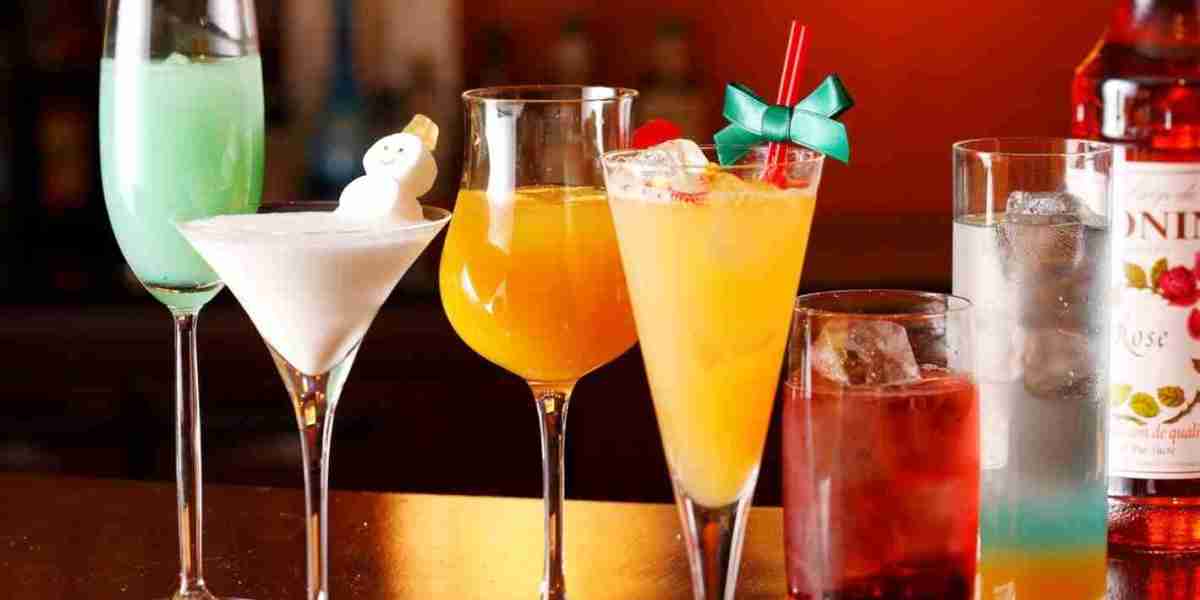The global beverage flavors market is experiencing a transformative shift as consumer preferences increasingly lean toward health, wellness, and functionality. The demand for functional and wellness beverages—drinks fortified with ingredients that support health beyond basic nutrition—has opened new and lucrative opportunities for flavor innovation. As this sector grows, it is not only reshaping the market but also driving the evolution of flavor development to balance health benefits with exceptional taste experiences.
The Rise of Functional and Wellness Beverages
Functional beverages are drinks enhanced with bioactive compounds, such as vitamins, minerals, probiotics, adaptogens, and herbal extracts, which target specific health outcomes like improved immunity, digestion, energy, and stress relief. This category includes:
Nutraceutical drinks
Immunity-boosting beverages
Hydration and electrolyte drinks
Mood-enhancing or relaxation beverages
Protein-rich sports and recovery drinks
The wellness trend, further accelerated by the COVID-19 pandemic, has shifted consumer demand toward beverages that promote holistic health—physical, mental, and emotional.
Flavor Innovation: The Core of Functional Appeal
Flavor plays a critical role in the success of wellness beverages. While functionality is essential, consumers will only repurchase products that deliver a pleasant taste. This has led to a new wave of creative, health-oriented flavor development.
Key Flavor Trends in Functional Beverages:
Citrus and Berry Flavors: Orange, lemon, acerola, and elderberry are popular in immune-boosting drinks due to their association with vitamin C.
Herbal and Botanical Notes: Flavors like chamomile, lavender, turmeric, ginger, and ginseng deliver both taste and perceived health benefits.
Exotic and Superfruit Flavors: Ingredients like goji berry, dragon fruit, açai, and passion fruit offer a sense of novelty while supporting antioxidant claims.
Green and Earthy Profiles: Matcha, spirulina, kale, and wheatgrass are used in detox and energy drinks for their functional appeal.
Spiced Infusions: Combinations like cinnamon-clove, cardamom-ginger, or turmeric-pepper are being used to offer warmth and therapeutic properties.
Market Drivers Behind the Functional Beverage Trend
Health-Conscious Lifestyles: Consumers are seeking alternatives to sugary sodas and alcohol, turning to drinks that contribute to their wellness goals.
Preventive Health Approach: Beverages that support immunity, gut health, cognitive function, and energy levels are in high demand.
Convenience and On-the-Go Consumption: Functional drinks are ideal for busy consumers looking for quick, effective health support.
Clean Label Expectations: Shoppers want recognizable ingredients, no artificial additives, and transparency in formulation.
Post-Pandemic Health Awareness: The global health crisis increased consumer focus on immune resilience and mental well-being, both of which functional drinks can support.
Opportunities for Beverage Flavor Manufacturers
The growth of functional and wellness beverages offers several strategic opportunities for flavor suppliers and beverage manufacturers:
Custom Flavor Systems: Developing proprietary flavor systems that mask the off-notes of functional ingredients without compromising health claims.
Plant-Based Formulation Support: Working with brands to create flavor profiles that enhance plant-based milks, protein drinks, and dairy alternatives.
Collaborations with Nutraceutical Brands: Partnering with health-focused companies to co-develop great-tasting functional drinks.
Expansion into Personalized Nutrition: Offering flavor options that align with personalized wellness goals based on lifestyle, age, and activity level.
Challenges and Considerations
Flavor Stability: Ensuring that flavor compounds remain stable and effective over shelf life, especially when mixed with bioactive ingredients.
Taste Masking: Many functional ingredients (e.g., proteins, adaptogens, vitamins) have bitter or metallic notes that require careful flavor balancing.
Regulatory Compliance: Aligning flavor use with regional health claims and labeling laws, especially in clean label and organic segments.
Future Outlook
The beverage flavors market is poised for sustained growth, especially in the functional and wellness categories. According to industry projections, demand for health-enhancing drinks will continue to climb through 2030, driven by innovation in both ingredients and flavor design. Companies that can successfully marry health benefits with satisfying and memorable flavor experiences will lead the next chapter of growth in the beverage sector.
Conclusion
The future of the beverage flavors market lies at the intersection of health and taste. As functional and wellness beverages gain mainstream appeal, flavor innovation will be crucial to capturing and retaining consumer interest. By embracing clean label principles, botanical trends, and science-backed functionality, the industry is well-positioned to meet modern consumers' evolving needs—one flavorful sip at a time.


